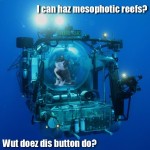This week a really great project is unfolding in the waters of the Indian River Lagoon, Florida. It’s the annual Health and Environmental Risk Assessment for free-ranging bottlenose dolphins, one of the longest standing and most comprehensive health assessments of any marine animal. The project is spearheaded by Dr. Greg Bossart (Senior VP at Georgia Aquarium) and Dr. Pat Fair (National Ocean Service), and coordinated by Steve McCulloch from FAU/Harbor Branch Oceanographic Institute, with funding from several sources including a speciality FL license plate. I’ll be helping out this year, as will a bevy of vets, vet techs, boat captains and volunteer helpers, all aiming to gather health indices from wild dolphins in order to identify threats to wild populations, as well as to develop the dolphin as a model species for oceans and human health (OHH). The latter is a buzz field in marine science and, in this case, revolves around the idea that as apex predators, dolphins reflect environmental conditions in all other parts of the food web. As such they are excellent indicators of overall environmental health and, as is so often emphasised these days, a healthy environment means healthy people.

The specific setting for HERA is unique. The Indian River Lagoon is a long skinny part of the intracoastal waterway on the Atlantic coast of Florida and is the most diverse estuaries anywhere in North America, playing home to extensive fish nurseries, seagrass beds, sharks, rays, manatees and dolphins. It also suffers from its fair share of human impacts, such that there are clear gradients in different environmental health parameters (pollutants are a good example) from one end to the other. These gradients make the IRL a fantastic sort of “natural laboratory” where the health or disease status of animals can be effectively correlated to potential environmental causes, thereby shedding light on both.
I’ll be a little quiet during the next two weeks as I work alongside this large team, learning as much as we can about the health of dolphins, the estuary, and by extension ourselves. If you want to read more about the project, go here or here






2 Replies to “Studying dolphins as sentinels of oceans and human health”
Comments are closed.